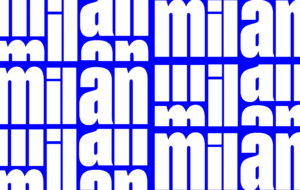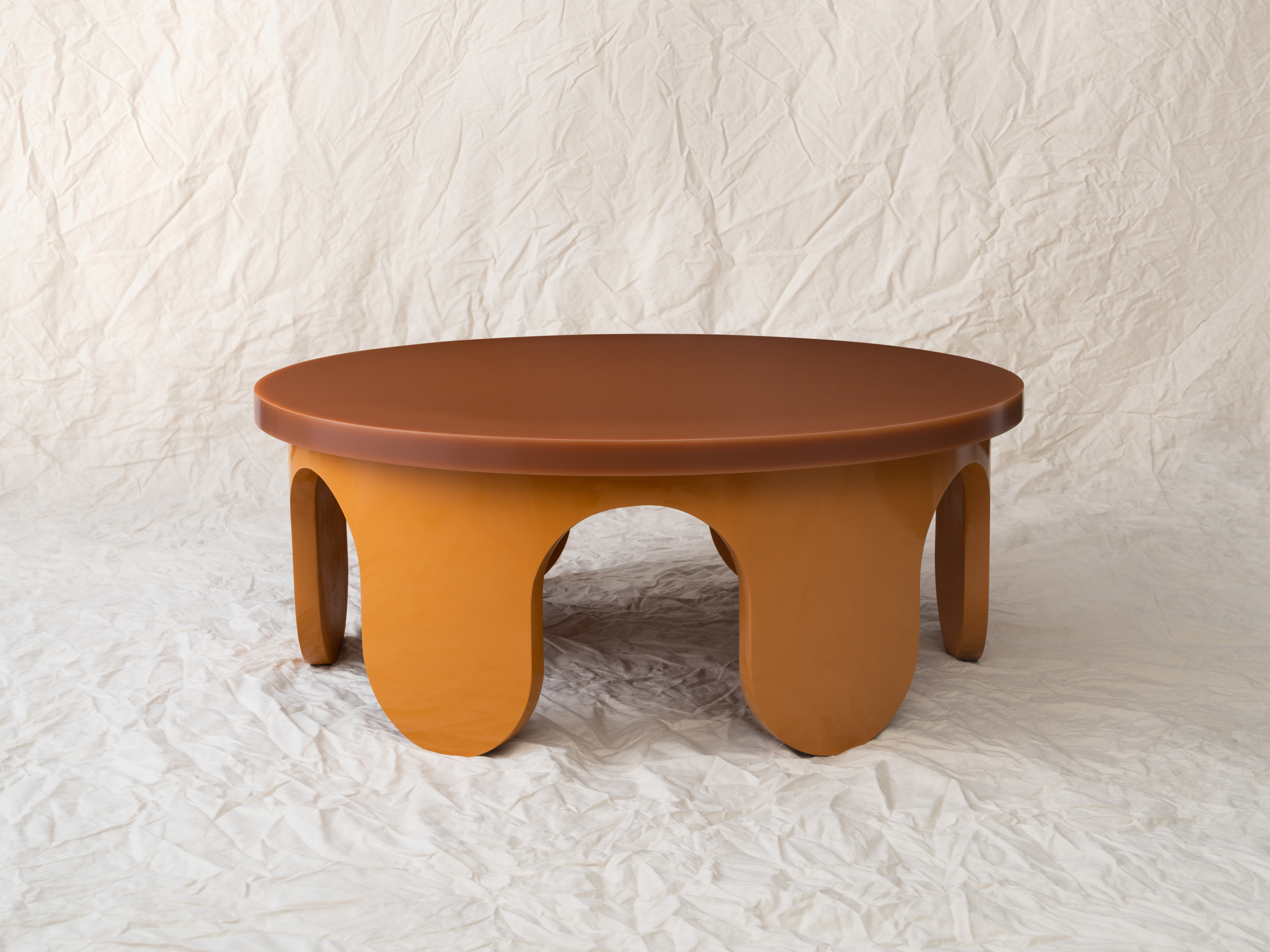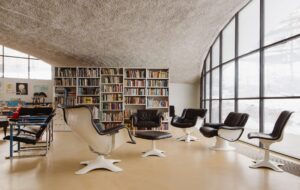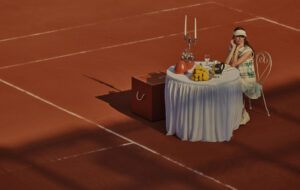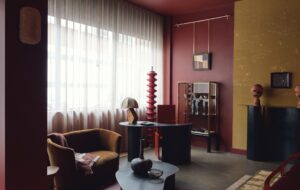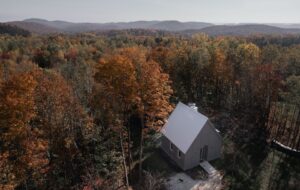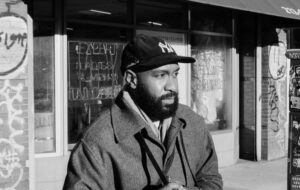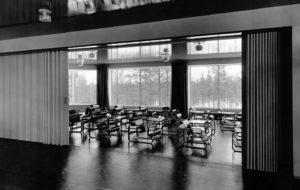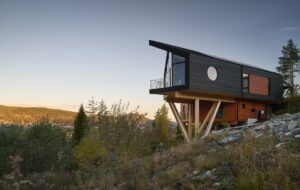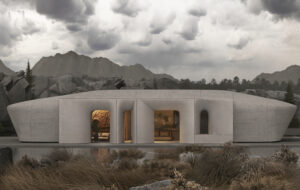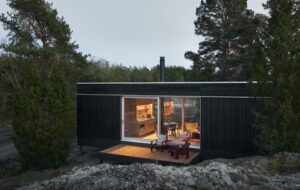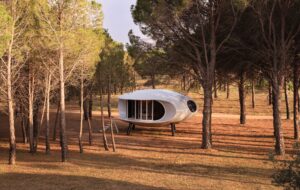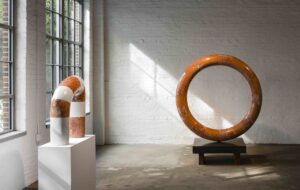|
|
||
|
Buckminster Fuller saw his geodesic domes as a solution to the post-war housing crisis, but they have usually been put to more whimsical uses. On Copenhagen’s waterfront, a recent incarnation of the Buckydome continues this paradoxical legacy – on the one hand, it is an earnest attempt to make space for experimentation and political debate; on the other, it is an ephemeral inhabitation of a site that will soon revert to the more serious business of making money from housing development of a conventional sort. The Dome of Visions, designed by the young Danish architects Kristoffer Tejlgaard and Benny Jepsen and sponsored by developer NCC, is a mobile, transparent hemisphere made from timber struts clad in clear acrylic polygons; it contains a microclimate that shelters fruit trees and herbs alongside informal studio and event space. In its first location – a site between the Michelin-starred Noma and the 19th-century warehouses of Christianshavn, it fulfilled a peculiar function combining sales office, think-tank, music venue and ecological experiment in the Fuller tradition. For five days this April, the dome housed its most significant programme: a charrette led by Theatrum Mundi, the sociologist Richard Sennett’s most recent endeavour. Theatrum Mundi aims to bring together urbanists and architects alongside musicians, theatre practitioners and visual artists, in an effort to “reimagine the public spaces of 21st-century cities”. It’s a loose network aimed at encouraging the interdisciplinary conversations that are common among younger practitioners, but seem to become increasingly rare as they get more established. With a membership ranging from Brian Eno to Sennett’s LSE colleague Ricky Burdett, Theatrum Mundi may seem more of an elite club than a force for change, but there’s no doubt that it is taken seriously by its partners. While it eschews a conventional consultancy model, the Copenhagen workshops saw members working with local activists, designers and students to propose strategies for the Christianshavn waterfront, in particular the sites around the monumental and much-loathed new opera house.
The charrette pointed up the conundrum of a city, which, while liberal, liveable and civilised, struggles with the energetic friction and the conflict that Sennett has spent a lifetime expounding as central to public life. The Copenhagen planners have a level of control about aspects of detail that would be the envy of counterparts in British or American cities, and embrace grand projets that are sometimes funded through an oddly 19th-century philanthropic grandiosity. The opera house – entirely paid for by the magnate of the Maersk shipping line – is perhaps the most controversial example. Maersk McKinney Møller chose a site that he owned, made the architect – Henning Larsen – deliver a building to his own design whims, and continues to control things from beyond the grave through the family’s covenants on the vast, windswept lawns either side. This peculiar blight prevents the integration of his monument with the city around it, aside from its deliberately confrontational relationship with the royal palace on the other side of the water. Appropriately for the strong theatrical influence in the network, storytelling, myths and ritual were explored as alternatives to singular “visions” of city plans and strategies. The city decision-makers who visited the workshop enthused about the Dome, and the ideas it nourished, as a replicable model for other sites in Copenhagen, but struggled to see beyond a reductive application towards a broader re-energising of the development agenda. Temporary projects have become a voguish way for property developers to demonstrate their style credentials and garner some local goodwill from both tastemakers and local interest groups. These can be test-beds for a broader approach to city development, but the paradox of translating Sennett’s ideas into urban strategy probably stands a better chance in a city where the bureaucrats are less happily in control. Spaces-In-Between: The City Becoming Domes of Vision, Kroyers Plads, Copenhagen, 26-30 April 2013 |
Image Theatrum Mundi
Words Hana Loftus |
|
|
||


